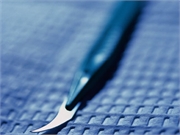Age, education, preventive mastectomy linked to hormone therapy use in BRCA mutation carriers
MONDAY, Aug. 17, 2020 (HealthDay News) — Age at surgery, education level, and preventive mastectomy are associated with hormone therapy (HT) use after preventive oophorectomy in BRCA mutation carriers, according to a study published online Aug. 10 in Menopause.
Javier Mejia-Gomez, M.D., from the University of Toronto, and colleagues identified the frequency and predictors of HT use in BRCA mutation carriers who underwent preventive oophorectomy before age 50 years. Participants had a minimum of two years of follow-up and completed questionnaires every two years to provide information on HT use and other important variables.
Overall, the analyses included 793 women with BRCA1 or BRCA2 mutations. The researchers found that oophorectomy occurred at a mean of 42 years. After oophorectomy, 61 percent of women reported using HT. Young age at surgery, a high level of education, and preventive mastectomy were factors associated with HR use.
“The existing evidence, as well as current management guidelines, indicates that estrogen-containing HT is a reasonable option for high-risk women who have undergone preventive mastectomy as well as surgical menopause,” the authors write. “Additional training in this area may lead to a more personalized approach to managing menopausal symptoms without increasing cancer risk.”
Copyright © 2020 HealthDay. All rights reserved.








